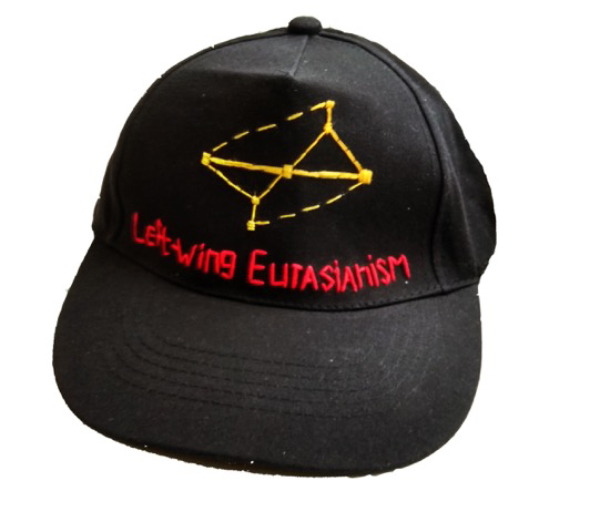Nikolay Smirnov / Pernod Ricard Fellowship 2018
In residency from April to May 2018 and in February 2019
Nikolay Smirnov (born in 1982) works as an artist, a geographer, a curator and a researcher regarding spatial practices and representations of space and place in art, science, museum practices and everyday life. He recently developed the concept of speculative geography as a tool for local studies.
He graduated from the Rodchenko Art School, Geography Department of Moscow State University, and The School of Contemporary Art Free Workshops MMOMA. Co-curator of the projects Metageography and Permafrost (Arctic Biennale, Yakutsk, 2016), Nikolay Smirnov has been nominated for the Innovation Award for a Curatorial Project.

- Nikolay Smirnov, Left-wing Eurasianism, 2017
UPCOMING EVENTS
SATURDAY, FEBRUARY 23, 3 P.M. - 7 P.M.
Open studio of Nikolay Smirnov (Pernod Ricard Fellow) in collaboration with Noémie Bablet, Clémence Estève, Violaine Lochu, Paola Quilici, Ana Vega
Statement
STATEMENT
“In 1926-1929, Paris and Clamart became the base of the left-wing Eurasianism, the center of activities in printing and distribution of left-wing eurasianist books, leaflets, journals etc. Left-wing Eurasianism supported the revolution of 1917 and the Soviet Union and considered their doctrine the ‘second soviet ideology’. Their leaders (Petr P. Suvchinsky, Lev P. Karsavin, Dmitry P. Sviatopolk-Mirsky) developed ‘Marxist Eurasianism’ as communism plus mesto-razvitie (literally ‘place-development’, an Eurasianist concept asserting a close connection between place, landscape and society). Left-wing Eurasianists published 35 issues of Eurasia in Paris, where they developed original views on revolution, socialism, Marxism, religion, the young Soviet state, its culture and philosophy in dialog with other émigré political forces.
I want to investigate the French and Parisian context to create a speculative museum of left-wing Eurasianism, to represent its contradictory ideas; knotty activities, up to the connection with the Soviet secret services; meta-geographical connections between the landscapes of Paris and Clamart and left-wing Eurasianism, from both historical and contemporary perspectives.
Also, I suppose that it can be productive to look at left-wing Eurasianism as on radical artistic activity.
Indeed, Eurasianists’ ideas resonate with contemporary issues. They initiated a discourse on postcolonialism, condemned Eurocentrism and initiated the rehabilitation of non-European cultures in a non-aggressive, anti-western and anti-global way, standing for a dialogue of civilizations. And of course it is a ‘product of Russian exile’, a thought born in remote meta-geographical connection between Russia and Paris, Clamart.”
Partager